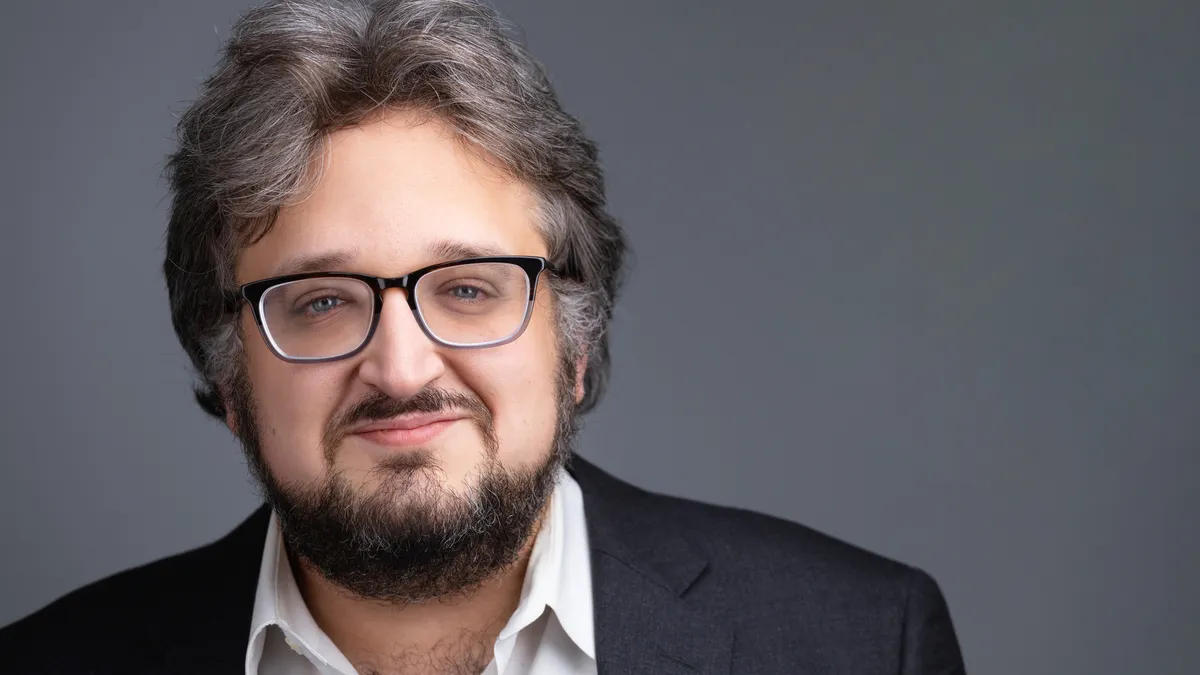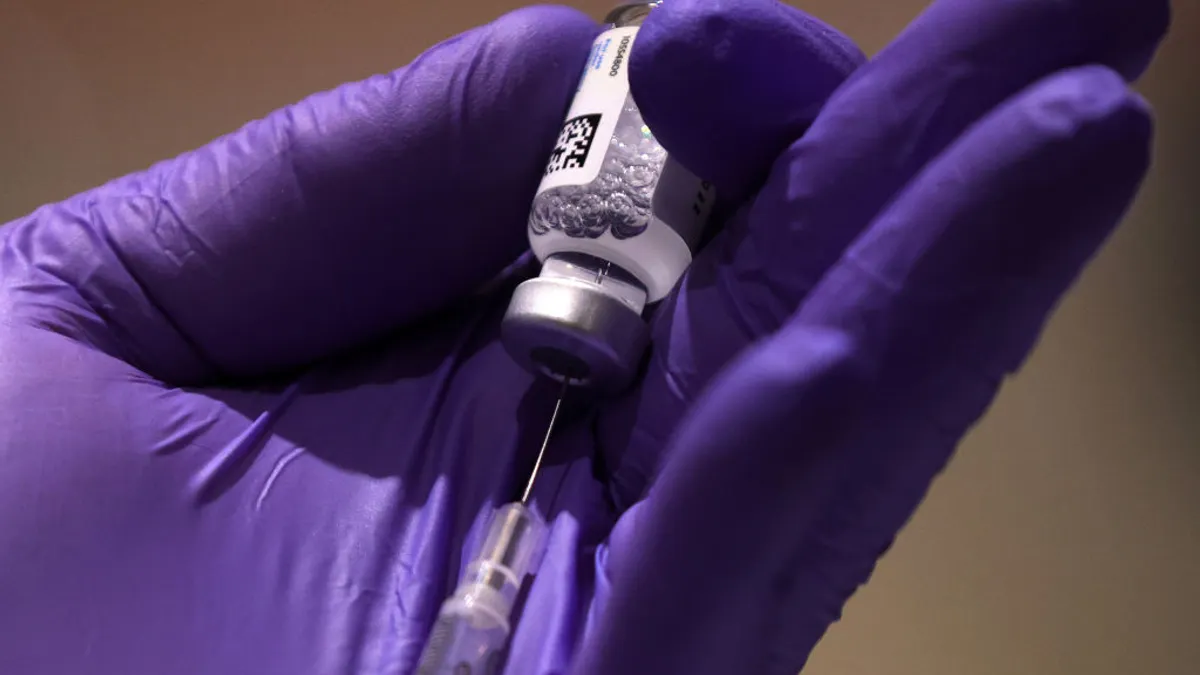Roivant has done it again. The company is selling one of its subsidiaries, Dermavant, to Organon with more than $1 billion in potential milestone payments on the line. Around this time last year, Roivant sold another of its companies — called “Vants” — to Roche for $7 billion.
In the meantime, Roivant is using the capital it’s built up to bring more treatments into the fold, most recently partnering with Bayer to form Pulmovant, a company based on a pulmonary hypertension drug in clinical development.
So what is Roivant CEO Matt Gline’s “magic trick”? With a risk-averse business model (and a little luck, he acknowledges) the company has avoided much of biotech’s yearslong investment drought and steady layoffs to remain firmly in the black and growing at a steady pace.
“The only way you’re in the right place at the right time is by waiting outside the door like a puppy for years, and we’ve been doing that,” Gline said. “It’s paid off for us.”
Taking a long-term investment strategy by buying up underutilized — and sometimes undervalued — drug development programs keeps Roivant circling the biopharma skies for fresh new directions. And not being tied to a single, risky strategy has made a big difference, Gline said.
“Our dogma as a company is that we don’t have a dogma,” Gline said. “So at a moment in time when a lot of other people have been chasing whatever their strategy is, being able to live outside and around the edges of other people’s cookie cutters is quite valuable.”
Here, we spoke to Gline about Roivant’s recent approach to dealmaking as both a seller and a buyer, the company’s inclination to stay in charted biological territory, and what continuing success looks like as the company builds its coffers.
This interview has been edited for brevity and style.
PHARMAVOICE: As you ‘live outside and around the edges’ of the biotech industry, where has the more traditional ‘cookie cutter’ strategy gone wrong in the last few years?
MATT GLINE: It’s gone right in a lot of places — there are some great success stories and a huge pile of M&A transactions for single-product, very focused companies. Those successes are the standard biotech playbook working the way it’s supposed to. But I think Big Pharma is in a moment of pretty significant transition with a lot of important drugs losing exclusivity. And they’re stuck trying to deliver consistent EPS growth despite the physics of their business model. In those situations, a lot changes strategically.
But when they need to shuffle things up, that creates opportunity for people like us, because we can go and find the things that are falling out. It’s been a tough capital market, and biotech is a very capital hungry business. We’ve been fortunate to be well capitalized over this period, and what differentiates us from most biotech companies is we have a multiproduct pipeline and a diversified business. We’re not bound to one thing, and that has made it harder for us to get acquired. It’s made us a less traditional biotech company because it gives us the ability to be a lot more flexible to chase optionality.
Was that always the plan?
We had a view that one of the foibles of many biotech companies is trying to do expensive things on a shoestring. That often leads to bad decision making. Being well capitalized was always part of the plan, and it’s become more true the older we’ve gotten as a company. You’ve got to play the sports you’re good at.
What are the characteristics of a drug that make for a good addition to Roivant’s pipeline? For instance, the pulmonary hypertension candidate you recently bought from Bayer.
What’s unique about us is we’re able to do these things with Big Pharma companies repeatedly, and the ‘magic trick’ has a lot to do with how we structure our deals and the relationships we’ve built. What we like about this particular program is that the path has been paved in pulmonary hypertension with interstitial lung disease — the drug Tyvaso [from United Therapeutics] has been approved, and we know what the FDA is looking for. So we like the way that opportunity is set up. Bayer, who is our partner on the program, is really the grandfather of this biology, as far as pharma companies are concerned. And we understand the reasons for them not to pursue it, getting out of respiratory to focus the business on other areas. When we look at the totality of the evidence, it feels like a big opportunity.
What direction do you definitely not want to take the company? The characteristics of a drug candidate or technology you wouldn’t touch with a 10-foot pole?
What are some sports we’re less good at playing? We’re not often the company to take on completely uncharted biology risk. We’re not the ones to originate a brand new target that’s never been touched in humans before. The world needs those people — we need new targets, and there are people who are good at it and dogmatically chase those ideas their entire career.
We try to avoid compounding risks. On the biology side, we’re looking for programs where we know the risk we’re taking. Our business involves going after the bits of cookie dough that exist outside other people’s cookie cutters. One person wants the pumpkin, and one person wants the witch and another wants the goblin, and then there’s this weird-shaped piece that’s around it — and that’s where we live. Some areas lend themselves better to this approach. For example, oncology is a business that often involves carefully constructed portfolios of therapies that work well together, and it’s hard to build that from the scraps around the edges. If we found something we love in oncology, we would do it, but it’s less likely we’re going to find it there.
You just sold Dermavant to the women’s health company Organon with the plaque psoriasis cream Vtama as part of the deal. In the wake of last year’s multibillion-dollar sale of Telavant to Roche, how do you approach the dealmaking process?
The first and most important thing that solves every other part of this problem is to work on therapies that we think matter and are helpful to patients and have value. If you do that, everything else falls into place. In this case, we were approached and were in conversations with multiple people, and they saw value in this program. And the expertise that other people had and the scale they had — both of which we had a little less of — were going to be helpful in maximizing the opportunity for Vtama. Organon is great at the ground game required for this business. And it made it easier for us that they were willing to share significantly in the long-term benefit of the product. It’s a good drug that we believe in — I’m a patient, myself.
If we look at the Roche deal as a turning point and these recent successes as confirmation of that model, what does continuing success look like for Roivant?
We’re constantly looking for new things, and I think we’ll find new things that will change our story. But for the next 18 months, our deck is pretty well stacked. We have a bunch of data coming in from our FcRn franchise [at Immunovant]. We have potentially registrational data coming in for our dermatomyositis program [at Priovant] and data coming in sarcoidosis with namilumab [at Kinevant], plus a lot of meaningful progress being made in our LNP [patent] litigation with Moderna that will be next year. There’s a lot to see through in our existing business before you even start talking about dealmaking and business development.
With all the individual companies at Roivant, how do you resource them appropriately and stay flexible enough to adapt to a changing industry?
Businesses that can’t learn from their own mistakes are destined to fail, and so we have to be able to capture those learnings and transfer them. The most important thing about that, which is trite but it’s true, is you have to do your best to be guided by the truth and that data you’ve got available to you. I think people make really bad decisions when following some cost fallacies down the drain, but you have to be ruthlessly data-driven at every step of the way. It’s still hard, but I believe we are relatively nimble. Changing strategy, incorporating new information — these are not things you can do overnight.




















